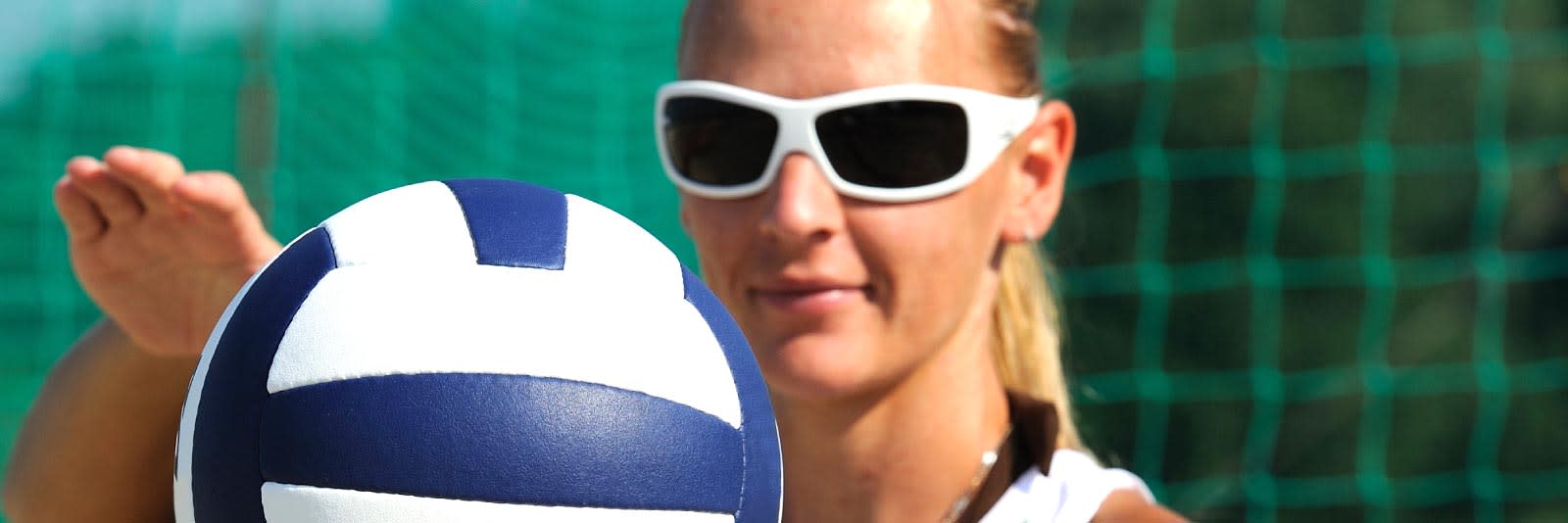Beach Volleyball Scholarship Facts

Getting a beach volleyball scholarship is a great way to continue playing the sport you love and finance your college education. Scholarships are given to elite athletes who have demonstrated that they have the potential to compete at the highest level. Student-athletes have to go through the recruiting process in order to secure their roster spot and get an athletic scholarship. Take a look at the table below to see the scholarship stats for beach volleyball.
| Division Level | Number of Schools | Average Roster Size | Max Scholarships per School |
| D1 | 65 | 17.8 | 6 |
| D2 | 18 | 18.6 | 5 |
| D3 | 8 | 15.6 | N/A |
| NAIA | 32 | 14 | Varies |
| CCCAA* | 47 | 13 | Varies |
* California Community College Athletic Association (CCCAA) is a sports association for community colleges in the state of California.
The NCAA D1 Council adopted legislation that loosened regulation regarding need-based aid and academic scholarships that are not tied to athletic ability. Effective August 1, 2020, teams in equivalency sports like men’s volleyball will not have any athletes’ need- and academic-based aid count against a team’s maximum athletic scholarship limit. Prior to this rule change, athletes had to meet certain criteria for their additional aid to not be counted against a team’s athletic scholarship limit.
Beach volleyball teams will still have a maximum athletic scholarship cap, but student-athletes can seek to add as much need-based aid and academic scholarships as they are able to secure. With school and family budgets being impacted by the coronavirus, this rule change should allow beach volleyball programs that have the funds to extend more money to families and athletes that need it—especially at private universities with higher tuition.
Because beach volleyball is the newest NCAA championship event, there aren’t as many schools offering beach volleyball as other NCAA sports established earlier on. While more schools are planning to add beach volleyball programs over the next several years, the reality is that there is a lot of competition for a limited number of roster spots at this point.
Number of beach volleyball scholarships by division level
In the table above, the scholarship limit refers to the maximum number of full-ride scholarships that colleges at each division level are allowed to give out. Because beach volleyball is an equivalency sport, coaches are not required to give out full scholarships to their athletes. Instead, they can break up the scholarships however they want.
For example, a D1 beach volleyball school has six full-ride scholarships that they can distribute. However, there are 12 athletes they want to give money to. So, the coach can give a half scholarship to each of those 12 athletes.
Bear in mind that, not every school’s beach volleyball program is fully funded or is able to give out the maximum number of scholarships. Some D1 schools may only have four scholarships to give, so it’s important to develop a good relationship with the coaches recruiting you, and when the time comes to discuss scholarships, you ask the right questions to better understand how scholarships are handled at that particular program.
Average beach volleyball scholarship amount
Many families ask how much the average scholarship is for college beach volleyball. Unfortunately, that’s a tough statistic to pinpoint. The cost of tuition at each college and university is going to range from approximately $20,000 a year to $60,000. Trying to find an average scholarship amount doesn’t account for those differences in tuition. Furthermore, not all athletes receive scholarships all four years of their college beach volleyball career, which is tough to factor in when considering an average dollar amount.
Instead of trying to determine what the average scholarship amount is, we recommend families first figure out how much they are willing to pay for four years of college. Then, as you’re going through the recruiting process, you can compare offers based on your family’s expected contribution, or the amount you will pay out of pocket after you factor in all scholarship dollars.
What are my chances of playing beach volleyball in college and getting a scholarship?
Lana Simic has 20 years of experience playing collegiate and professional beach volleyball, as well as coaching at the college and club levels. Coach Simic explains that the typical collegiate beach volleyball team will include between 16-22 athletes. Usually, the top four or five pairs will compete in major tournaments, and they will get most—if not all—of the athletic scholarship money available at that school.
However, she points out that programs will often recruit talented incoming freshman who might not play on one of the top five teams their first year or two. But they can work their way up to that point and earn a scholarship as a junior or senior in college. She’s even seen athletes who’ve started out with 50% scholarships as freshman and sophomores bumped up to 100% scholarships their junior and senior year.
Insider tip: If you aren’t able to get the beach volleyball scholarship that you’re looking for, try searching for schools one level lower. Top athletes will always receive more scholarship money than those who are in the middle of the pack.
How D3 athletes still get college scholarships
While D3 schools don’t offer athletic scholarships, most D3 athletes do receive other forms of financial aid. If you’re interested in competing at a D3 school, don’t let the lack of athletic scholarships deter you. Do you have good grades and test scores? You might qualify for an academic scholarship. Have you been involved in extracurriculars and in your community? You might be able to find a merit-based scholarship. And many families do take advantage of need-based financial aid, which is awarded based on factors like household income.
Athletic scholarships aren’t the only way to help pay for your college tuition. There are many other forms of scholarships you can add on in addition to your athletic scholarship if you’re willing to go out and find them.
















